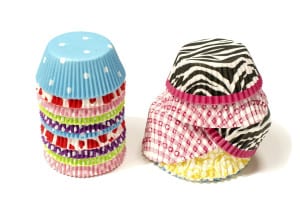What is the BestLaminate Paper?
The common perception of lamination starts and stops with the type of plastic lamination film that you would typically see on a driver’s license or a restaurant menu. This type of lamination — which we call “over lamination”— represents only a tiny fraction of the types of laminations that can be created. Many types of laminations are used in printing and writing grade papers; many other, different lamination configurations are used in packaging and labeling applications, as well as those for food grade, consumer, and industrial products.
Many printing grade papers are actually laminations of two thinner, lighter weight grades of paper. The most common use is to make heavy weight brochure covers, cardstock, tickets, and colored papers and paperboards.
The need for lamination is created by two factors. The first factor is paper machines — they are limited in terms of the thickness and grade of paper they can produce.
The second factor is the application that a given laminate paper will be used in. Different applications demand different requirements from laminate paper — the look, feel, thickness, and other physical attributes required of a laminate paper vary on a case by case basis.
Paper makers have relied on lamination for over 50 years for the creation of different grades to expand their product line, satisfy niche product requirements, and enhance the appearance and feel of printed materials.
 In the product packaging and labeling fields, lamination is often utilized to create products that meet the brand identity and product protection requirements.
In the product packaging and labeling fields, lamination is often utilized to create products that meet the brand identity and product protection requirements.
One of the oldest forms of lamination was devised for the set up box industry. The fancy colored boxes used by the confection, jewelry, and cosmetic industries are laminations of colored paper and box board. The color of paper is often the brand’s identifying color, required to make packaging that completes the marketing mix.
Today, metallized polyester (MET-PET) and holographic MET-PET films are used to create a high-end, polished appearance. When laminated with paperboard, these films lend an attractive sheen to product packaging. Learn more about our Silver Box Advantage by downloading the free eBook.
Because of the expansive and variable nature of lamination, there is no single “best” laminate paper option. The best laminate paper varies for each industry, client, project, and product. The best laminate paper will be the one that has been custom engineered to solve your challenges.
Solving your problems is what Sierra Coating does best. We have the expertise, experience, and equipment to meet all of your coating and lamination needs. We can help you identify and create the right lamination by leveraging our knowledge of chemistry, our understanding of your unique needs, and our vast array of materials, including water-based, solventless, and hot-melt adhesives.
Contact us today — tell us the challenges you need your laminate paper to overcome. Our experts will fill in the gaps and create a laminate paper unique to your requirements and project needs.



